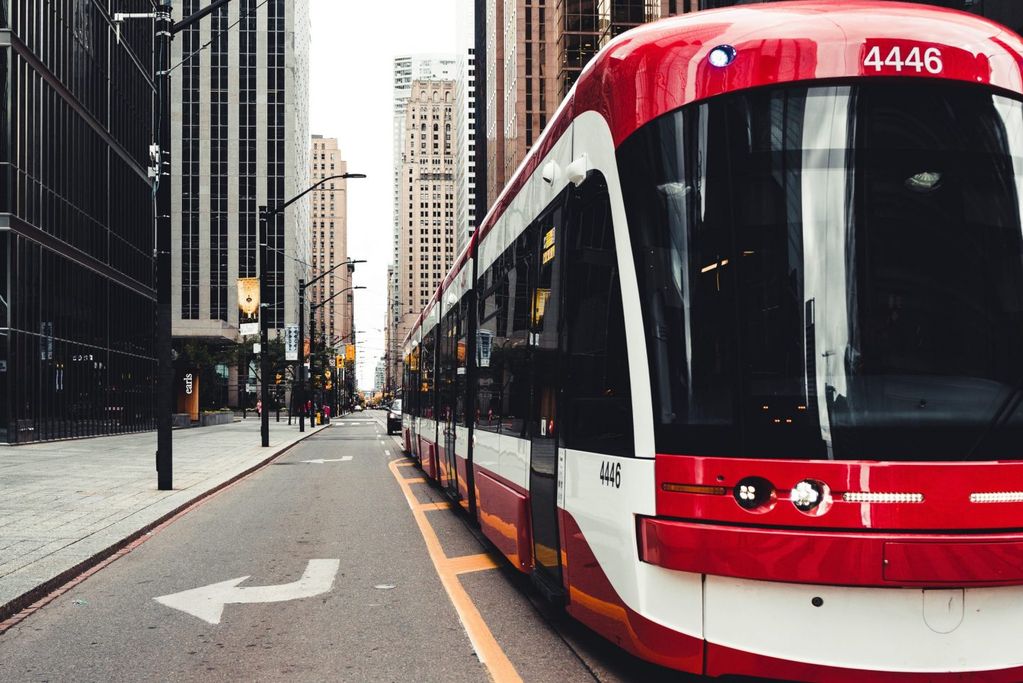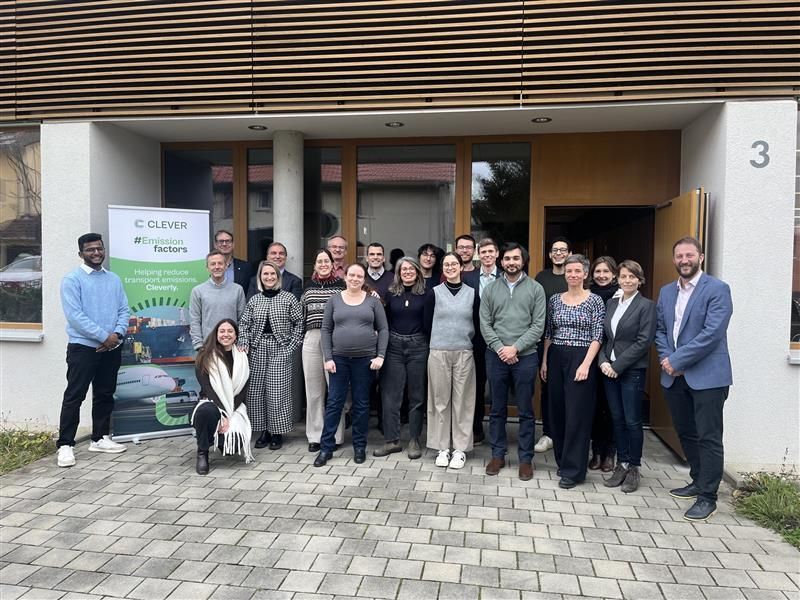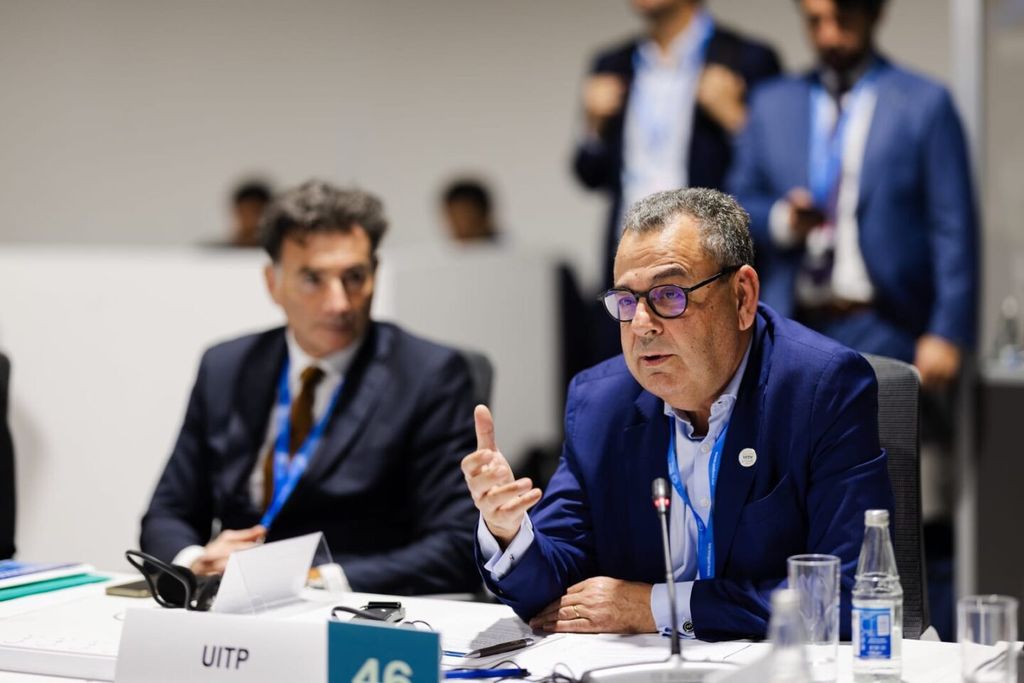
How public transport can decarbonise
Transitioning to renewable energy, acquiring zero-emission vehicles and sourcing energy locally; in the ongoing energy and climate crises, public transport is stepping up. The latest survey of the UITP Sustainable Development Committee among 71 of the worlds biggest public transport operators (PTOs), authorities (PTAs) and industries made this abundantly clear.
To lower their carbon footprint, most respondents say that they are critically looking at carbon emissions across their entire value chain. From vehicle manufacturing to sourcing the energy needed to power its operations.
Of PTOs and PTAs, 81% say they cover the energy transition in their strategy, while 72 % have a carbon neutrality target. Increasingly, public transport operators generate their own sustainable energy. Delhi metro for example, meets 35% of its energy demand with owned solar power and waste to energy processing.
But there is still a long way to go. The global transport sector accounts for a quarter of global energy-related CO2 emissions. And even though the number of clean busses increased rapidly, nearly doubling in Europe over the past five years, ‘non clean vehicles’ still make up 77% of bus fleets globally according to the UITP survey.
Avoid, shift, improve
Decarbonising public transport and increasing its modal share is the fastest and most cost-efficient way to achieve decarbonised mobility. As energy costs account for roughly 30% to 50% of the total public transport budget, transitioning to owned sustainable energy supplies or cooperating with energy providers and local stakeholders can save a lot of money.
So what do we mean when we say ‘renewable energy’?
But if we want to reduce the overall CO2 emissions from passenger transport and ultimately achieve net-zero emissions, the sector needs a holistic view. It requires an approach that goes beyond assets and operations alone.
Firstly, “avoid/reduce” means improving the efficiency of the transport system as a whole. Through transport-oriented and compact development of cities, the need for motorized travel and the trip length can be reduced. Transport demand management plays into this objective as well. Residential, work and leisure districts must become more closely connected and intermixed.
Stimulating mixed-use, transit-oriented developments and congestion charging can help avoid trips. By also designing the urban environment in a way that stimulates walking and cycling, energy consumption from transport can decrease drastically.
These policies are part of demand management, which can be a major strategy and policy tool. Public transport authorities, operators and even non-transport stakeholders can solve mobility challenges by influencing demand for mobility.
According to the International Transport Forum’s Transport Outlook 2021 Report, strong demand management policies would contribute to a 22% reduction in urban passenger transport emissions by 2050 compared with where we would be under the current policy trajectory.
Discover more about demand management in UITP’s policy brief.



The modal shift towards more environmentally friendly modes of transport is the second element to lower CO2 emissions from the sector. Every person that leaves their car at home in favour of public transport, cycling or walking, lowers energy consumption and carbon emissions.
Cities and governments can stimulate this shift by implementing schemes such as congestion charging, better infrastructure for public transport and active mobility, and making the use of the private car less attractive with traffic calming measures.
The final step is to improve the energy efficiency of transport modes and vehicles. The simplest example is to upgrade a bus fleet to electric zero-emissions busses and guarantee a renewable energy supply to charge them.
But not all renewable energy is created equal and each type has its own benefits and use cases. Powering a vehicle, be it a bus, train or water taxi, with hydrogen for example, consumes 3 times more renewable energy than through direct electrification. But hydrogen power does offer operational flexibility and can be transported to places with poor energy supply.
A modal shift towards public transport and active mobility is key to reach our climate objectives. To keep its leading role in decarbonisation, transitioning the public transport sector to renewable energy sources is crucial. The process is complex, but it is also an opportunity for operators and authorities to strengthen operations and economics while improving the network and urban life.
To account for its achievements on the road to decarbonisation, the public transport sector needs to report and monitor its emissions in line with the UNFCCC and the Paris Agreement. This ensures limiting carbon emissions won’t be a one off action, but a commitment to year-on-year emissions monitoring and reduction.
The GHG Protocol established a global standardised framework to measure and manage greenhouse gas (GHG) emissions. Not only from private and public sector operations, but also from value chains and mitigation actions. The protocol identifies three scopes of emissions:
Scope 1: Direct GHG emissions
Emissions that occur from sources that are owned or controlled by the company. For public transport, it refers to the fuel combustion of vehicles.
Scope 2: Electricity/energy indirect GHG emissions
Emissions that originate in the generation of purchased electricity/energy consumed by the organisation.
Those emissions refer to the emissions generated to perform a service, in this case public transport operations. Traditionally, these emissions are relatively well accounted for.
Scope 3: Corporate Value Chain
Scope 3 aims to help organisations understand the emissions impact of the entire value chain. It takes into account 15 categories of indirect emissions that provides requirements and guidance to prepare and publicly report a GHG emissions inventory that includes indirect emissions resulting from value chain activities.
There is a lack of standardised approaches in the accounting of indirect emissions in public transport. According to the survey results, accounting for scope 3 emissions is only done partially. In some part, this is due to the difficulty in identifying responsibilities along the supply chain.
Scope 3 emissions are split further into upstream (everything to produce the product) and downstream (everything to consume the product) emissions.
Discover the categories
The sector is moving quickly. EMT Madrid for example, aims to be fossil fuel free by the end of 2022, to achieve 100% renewable power generation by 2035, and to be decarbonised by 2050. Helsinki Region Transport has the ambition to cut GHG emissions by 90% by 2025 (baseline year: 2010) and decarbonise by 2035.
All surveyed industry members said they have included the energy transition in their strategy. 4 in 10 even say they have a stand-alone energy strategy.
In their strategies to decarbonise, public transport authorities and operators traditionally focus on vehicles. Meanwhile, according to the survey, shared cars, stations and buildings are covered least.
The majority of PTOs (61%) and PTAs (68%) have committed to procure only clean vehicles. On top of this, a quarter of operators and half of authorities commit to procuring only renewable energy.
But public transport undertakings are reliant on the provision and supply within their energy markets. There are systems that guarantee the provision of renewable energy to operate services.
One example is the Power Purchase Agreement (PPA), a long-term agreement to purchase clean energy from a specific asset at a fixed price or formula between a renewable developer and a consumer.
For the producer a PPA guarantees an income for the long-term, allowing for larger investments at lower risk. For the consumer it guarantees a stable supply of energy for a stable price, which in times of geopolitical turmoil is a valuable asset.
Other options to supply renewable energy as part of a strategy to decarbonise include:
- On site energy generation, for example from solar, wind and waste to energy systems;
- Hydrogen fuel cells;
- Biofuels.
Discover the survey results on the energy transition and renewable energy in public transport on MyLibrary.
Even though the public transport sector is evolving quickly and becoming ever more sustainable, the sector must still be seriously prioritised for climate investment, especially in developing countries worldwide.
It is an investment in a complete, inclusive, equitable, resilient climate solution. The public transport sector is committed to act, deliver the carbon emissions reductions needed now, and lead by example in the transition to a net-zero pathway in our cities.
If we are putting all our effort into one energy source, even if that is traditional fuel, we are putting all our eggs in one basket. Energy transition requires a holistic view, across assets and beyond operation alone to make public transport networks more resilient.
Curious how the public transport sector is adapting to climate change and mitigating its effects? Discover our previous article on climate change adaptation and mitigation:
https://www.uitp.org/news/climate-change-adaptation-and-mitigation-public-tranport-and-renewables/
And you can find the full results of the sustainable development committee survey on MyLibrary.
The 4 modules of the survey include:
- Module 1: Reporting of carbon emissions in public transport
- Module 2: Energy transition and renewable energy in public transport
- Module 3: Climate change adaptation of the public transport sector
- Module 4: Lifecycle carbon in infrastructures
exclusive resources









